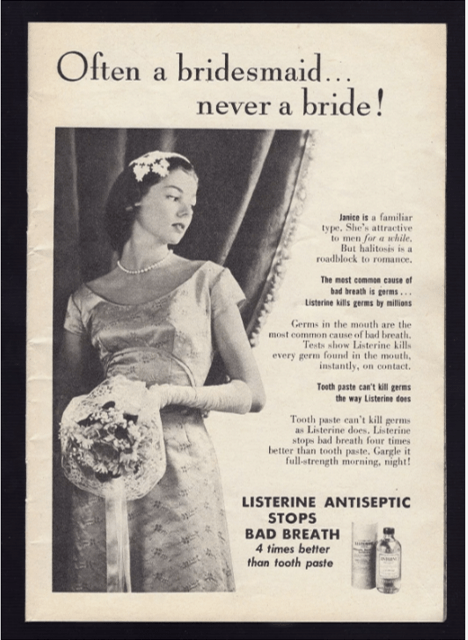In 1920, a little-known term “halitosis” gained widespread attention, thanks to a clever marketing campaign by Listerine. Although we now associate the word with medical jargon, it was originally coined to create a market for Listerine and establish it as a household product.
What is halitosis?
Simply put, “halitosis” is a euphemism for bad breath—the unpleasant odor that even your closest friends might hesitate to mention. The term combines the Latin word “halitus,” meaning breath, with the suffix “-osis,” which indicates a condition. Before Listerine popularized the term, bad breath was described in more direct and less flattering terms.
The birth of a marketing genius
Originally developed in the 19th century, Listerine was named in honor of Joseph Lister, a pioneer in antiseptic surgery who revolutionized medical practice with his focus on cleanliness and infection prevention. Listerine’s sales were sluggish in the 1920s.
To boost its market presence, the team at Lambert Pharmaceutical Company came up with the term “halitosis,” turning a common issue into a medical condition. This strategic move transformed bad breath from a minor inconvenience into a serious problem that needed immediate treatment. And course, the prescription was Listerine.

The “Often a bridesmaid, never a bride!” campaign
One of the most famous ads of Listerine was the “Often a Bridesmaid, Never a Bride” campaign. This 1920s ad featured a woman who remained a bridesmaid and never a bride due to her halitosis. The campaign suggested that bad breath could ruin one’s social life and romantic prospects. By linking bad breath to serious social consequences, Listerine effectively used fear-based advertising to drive sales. The term “halitosis” made the issue sound urgent and medical, rather than just cosmetic. People started paying attention to this word “halitosis” because it sounded new and scientific.
A century of influence
Today, “halitosis” is a term many recognize, even if its origins are not widely known. Listerine’s creation of the term is a powerful example of how marketing can shape consumer perceptions and behavior. By coining a medical-sounding term for a common problem, Listerine turned a product with modest sales into a market leader, thereby demonstrating the impact strategic wording can have on consumer habits.



